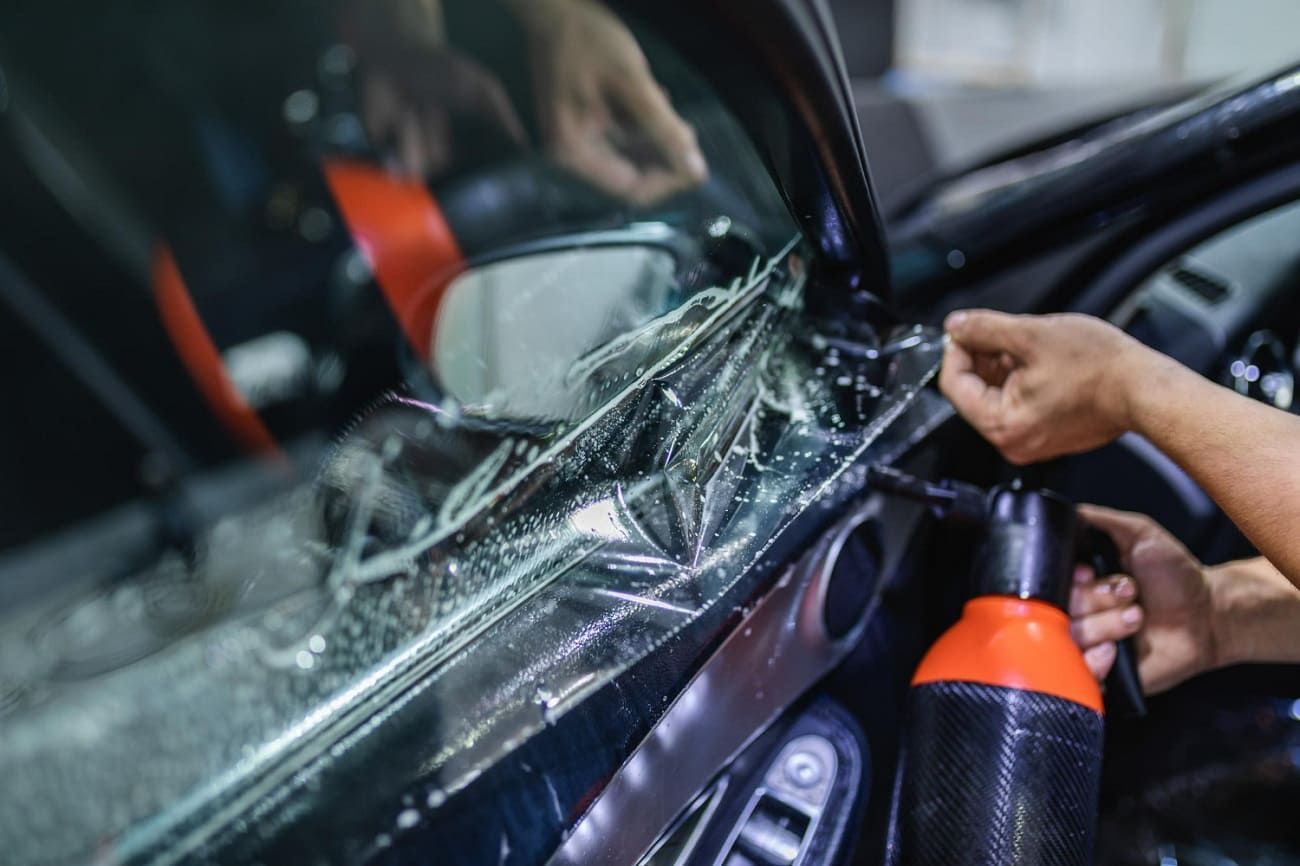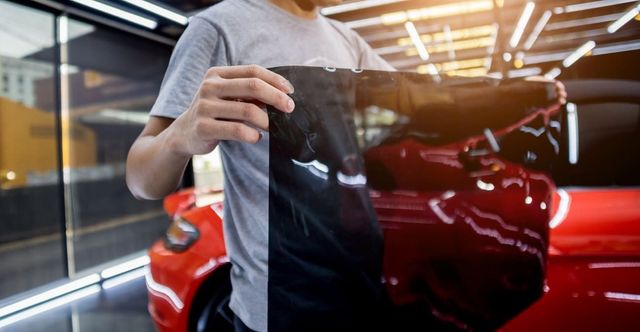The Latest Trends in window tinting for Modern Vehicles
The Latest Trends in window tinting for Modern Vehicles
Blog Article
Exploring the Various Kinds Of Window Color for Cars and Their Advantages

Colored Home Window Tint
Dyed window tint is a prominent choice among cars and truck proprietors looking for to enhance privacy and reduce glow while keeping an elegant appearance. This sort of tint is produced by including dye right into the glue layer, which is after that used to the home windows of the vehicle. The primary allure of dyed home window tint hinges on its ability to supply a cosmetically pleasing look without compromising capability.
One of the most considerable advantages of dyed window color is its capacity to block harmful UV rays, helping to protect both passengers and the vehicle's interior from sun damages. Additionally, this color efficiently decreases glare, adding to an extra comfy driving experience, specifically throughout intense daylight conditions. The strengthening of window shade also includes a layer of personal privacy, making it extra challenging for outsiders to see inside the automobile.
Nevertheless, it is important to note that while colored home window color offers many benefits, it may not offer as much warmth being rejected as other sorts of tints. Additionally, its long life can be influenced by exposure to extended sunshine, potentially bring about fading gradually. Overall, colored home window tint remains a favored alternative for those focusing on aesthetics and basic sun defense.
Metalized Home Window Color
Metalized window tint represents an advanced alternative for auto owners looking to improve both efficiency and looks. This kind of color integrates small metal particles that mirror sunlight, providing a variety of advantages that appeal to numerous lorry owners. Among the key advantages of metalized home window color is its premium heat rejection capacities, which can significantly lower the interior temperature of a vehicle. This not only enhances comfort for guests but also reduces the tons on the vehicle's cooling system, potentially boosting fuel effectiveness.
Additionally, metalized colors use boosted durability compared to colored films, making them immune to fading and scraping. This durability makes certain that the color keeps its efficiency and appearance over time, providing long-term worth.
In addition, metalized home window color can enhance privacy and safety and security by making it a lot more difficult for outsiders to see inside the vehicle. The reflective top quality of the tint can additionally discourage possible burglary, as belongings are less noticeable (window tinting). While it may disrupt some digital signals, such as GPS or cell phone function, the general advantages make metalized window tint a compelling selection for lots of vehicle proprietors
Ceramic Home Window Tint
Offering sophisticated modern technology and exceptional performance, ceramic home window color has arised as a top selection for discerning vehicle owners. This cutting-edge movie is made up of advanced ceramic particles that provide significant heat denial while preserving clearness pop over to this site and presence. Unlike standard tints, ceramic window color does not rely upon metal or color, which can hinder electronic you could try this out signals from gadgets such as general practitioner and cellular phone.
Among the standout benefits of ceramic window color is its remarkable UV protection. It blocks approximately 99% of unsafe ultraviolet rays, thus shielding both the lorry's inside and its passengers from sun damages. In addition, this kind of tint improves privacy without jeopardizing exposure, making it a functional option for day-to-day drivers and deluxe lorries alike.
Ceramic home window tint also flaunts durability; it is resistant to fading and damaging, guaranteeing resilient efficiency. Additionally, its non-reflective nature suggests it does not create glare, contributing to safer driving problems. For those seeking a premium color option that integrates aesthetics with functionality, ceramic home window color sticks out as a premium option, delivering improved comfort and protection when driving
Carbon Home Window Tint
When it concerns home window tinting choices, carbon window color has actually gotten appeal for its mix of performance and affordability. This kind of color is composed of carbon bits, which offer a distinct matte coating that improves the visual charm of lorries. Among the main advantages of carbon home window tint is its capacity to obstruct address a considerable amount of dangerous UV rays, safeguarding both the automobile's inside and its passengers from skin damage and fading.
In addition, carbon window tint uses exceptional warm denial homes, lowering the demand for excessive cooling and enhancing gas effectiveness. Unlike dyed tints, carbon colors do not discolor gradually, maintaining their effectiveness and appearance for several years. This sturdiness makes them a functional choice for car proprietors looking for lasting value.
Furthermore, carbon window tint is non-metalized, which implies it does not interfere with electronic signals, making it appropriate for lorries furnished with GPS, Bluetooth, and various other wireless technologies. The equilibrium of cost, efficiency, and aesthetic charm has actually established carbon home window tint as a favored option for many vehicle owners. Inevitably, it serves as a trustworthy remedy for those aiming to enhance comfort while ensuring style.
Factory Color
Factory color, additionally called OEM tint, describes the tinting that is related to automobile windows throughout the production procedure. This kind of tint is typically incorporated into the glass itself, offering a consistent appearance and regular degrees of shielding throughout all home windows. The main purpose of manufacturing facility color is to decrease glare and improve guest convenience while providing a degree of UV protection.

While manufacturing facility color uses basic advantages, it may not provide the very same level of warmth rejection or personal privacy as higher-grade aftermarket colors. Vehicle proprietors looking for enhanced efficiency might think about extra tinting alternatives, while still appreciating the visual appeal and capability factory color provides.
Final Thought

Nevertheless, it is necessary to note that while dyed window tint supplies countless benefits, it may not provide as much warmth denial as various other kinds of colors. For those seeking a costs color option that incorporates visual appeals with capability, ceramic window tint stands out as a superior choice, delivering enhanced comfort and defense on the roadway.
When it comes to window tinting alternatives, carbon home window color has actually acquired appeal for its mix of efficiency and cost.Factory color, likewise known as OEM color, refers to the tinting that is used to automobile home windows throughout the production process. The exact degree of color can differ depending on the car producer and model, with some lorries including extra substantial color on rear home windows than on front home windows.
Report this page